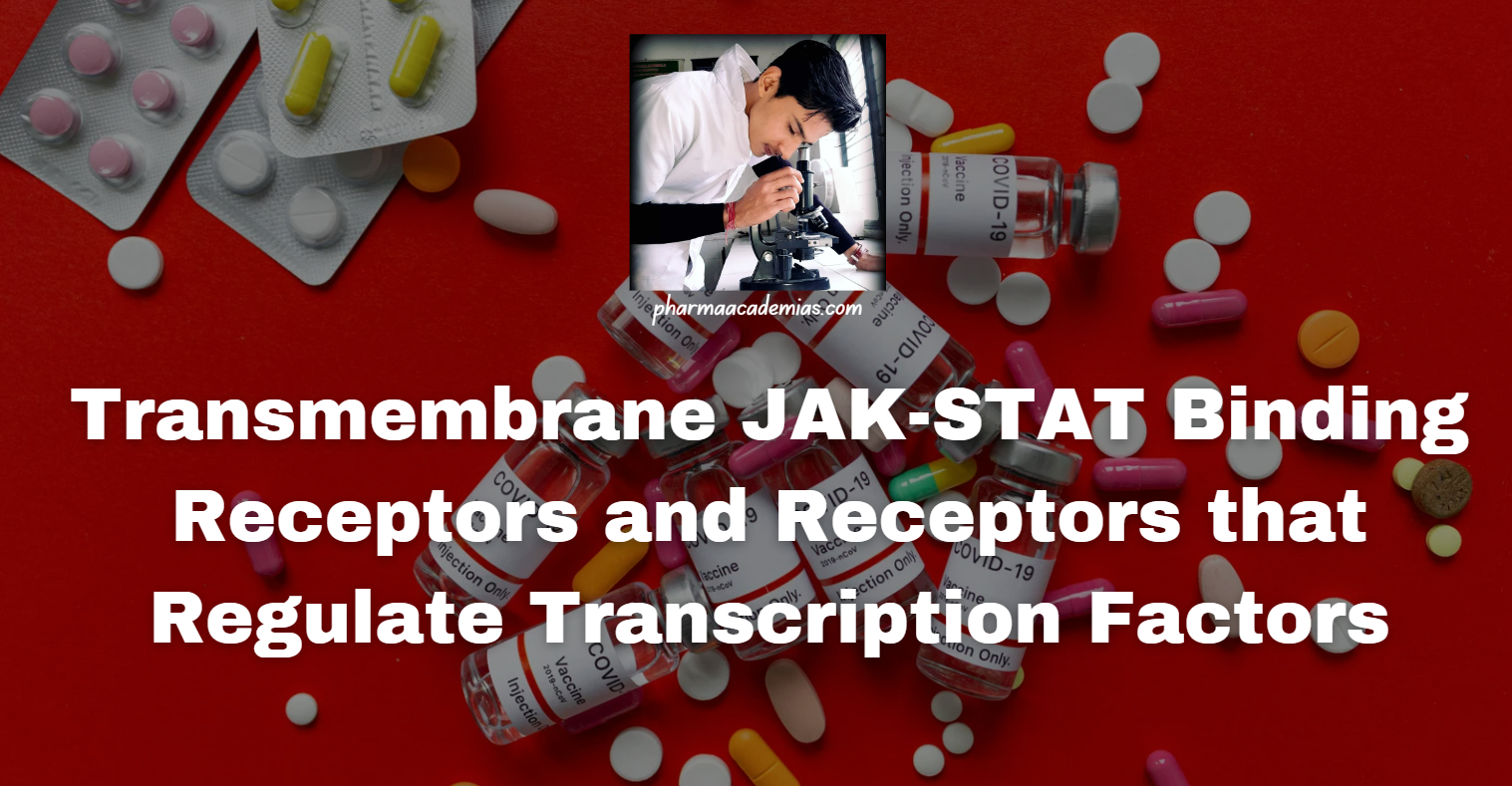Transmembrane receptors that bind to Janus kinases (JAKs) and subsequently activate Signal Transducers and Activators of Transcription (STAT) proteins play a pivotal role in regulating gene expression and various cellular processes. In this detailed note, we’ll explore the structure, function, signaling mechanisms, and pharmacological significance of these receptors, as well as other receptors that directly regulate transcription factors:
Structure of Transmembrane JAK-STAT Binding Receptors
1. Extracellular Ligand-Binding Domain:
– Transmembrane receptors that bind to JAKs typically have an extracellular ligand-binding domain responsible for recognizing specific cytokines or growth factors.
2. Single Transmembrane Helix:
– These receptors possess a single transmembrane helix that anchors the receptor to the cell membrane.
3. Intracellular JAK-Binding Domain:
– The intracellular domain of these receptors contains regions that bind to and activate Janus kinases (JAKs) upon ligand binding.
Function and Signaling Mechanisms

1. Cytokine/Growth Factor Binding: Cytokines and growth factors bind to their specific receptors on the cell surface.
2. Receptor Dimerization: This binding causes the receptors to pair up (dimerize) and attract JAK proteins.
3. JAK Activation: The JAK proteins become activated and add phosphate groups to the receptors.
4. STAT Docking: These phosphorylated receptors create docking sites for STAT proteins.
5. STAT Phosphorylation: The STAT proteins are then phosphorylated by the JAKs.
6. STAT Dimerization: Phosphorylated STATs leave the receptor and pair up with each other to form dimers.
7. Nuclear Entry and Gene Regulation: These STAT dimers move into the nucleus, bind to DNA, and regulate gene transcription.
OR
1. Ligand Binding and Receptor Activation:
– Upon ligand binding, transmembrane receptors induce conformational changes that lead to receptor dimerization or oligomerization.
– Dimerization activates associated JAK kinases, leading to their autophosphorylation and subsequent activation.
2. Phosphorylation of STAT Proteins:
– Activated JAK kinases phosphorylate specific tyrosine residues on intracellular domains of the receptor and on cytoplasmic STAT proteins.
3. STAT Protein Activation and Translocation:
– Phosphorylated STAT proteins form homo- or heterodimers and translocate to the nucleus.
– In the nucleus, STAT dimers bind to specific DNA sequences (STAT response elements), regulating the transcription of target genes.
Regulation of Trans-membrane JAK-STAT Binding Receptors
1. Feedback Regulation:
– Negative feedback mechanisms involving phosphatases and suppressors of cytokine signaling (SOCS) proteins regulate the duration and amplitude of JAK-STAT signaling.
– Phosphatases dephosphorylate receptor-associated JAKs and STAT proteins, attenuating signaling.
– SOCS proteins inhibit JAK activity and target receptors for degradation.
2. Cellular Localization:
– Ligand-induced internalization and recycling of receptors regulate their cell surface expression and signaling activity.
Pharmacological Importance
1. Therapeutic Targets:
– Dysregulation of JAK-STAT signaling is implicated in various diseases, including cancer, inflammation, and immune disorders.
– Inhibitors targeting JAK kinases or the interaction between receptors and JAKs are used in the treatment of rheumatoid arthritis, myelofibrosis, and other autoimmune diseases.
Other Receptors that Regulate Transcription Factors
1. Nuclear Hormone Receptors:
– Nuclear hormone receptors, such as the glucocorticoid receptor and estrogen receptor, directly regulate gene transcription in response to ligand binding.
– Ligand binding induces conformational changes in nuclear hormone receptors, leading to their translocation to the nucleus and modulation of gene expression.
2. Steroid Receptors:
– Steroid receptors, including glucocorticoid receptors and mineralocorticoid receptors, are ligand-activated transcription factors that regulate gene expression in response to steroid hormones.
– Steroid hormones diffuse across the cell membrane and bind to intracellular steroid receptors, initiating transcriptional activation or repression.
Transmembrane receptors that bind to JAKs and regulate STAT transcription factors play crucial roles in mediating cellular responses to cytokines and growth factors. Their structure, function, and signaling mechanisms provide valuable insights into disease mechanisms and therapeutic targets for drug discovery and development. Additionally, other receptors, such as nuclear hormone receptors and steroid receptors, directly regulate gene transcription, further contributing to the complexity of cellular signaling networks and offering potential targets for therapeutic intervention in various diseases.

